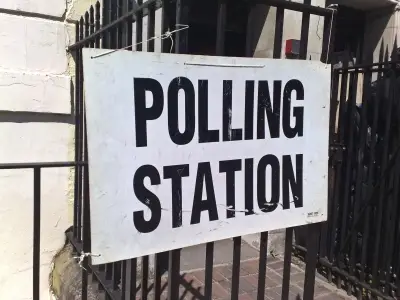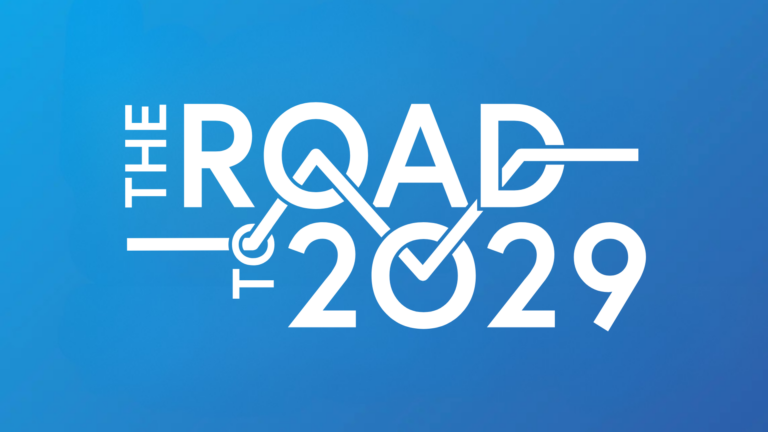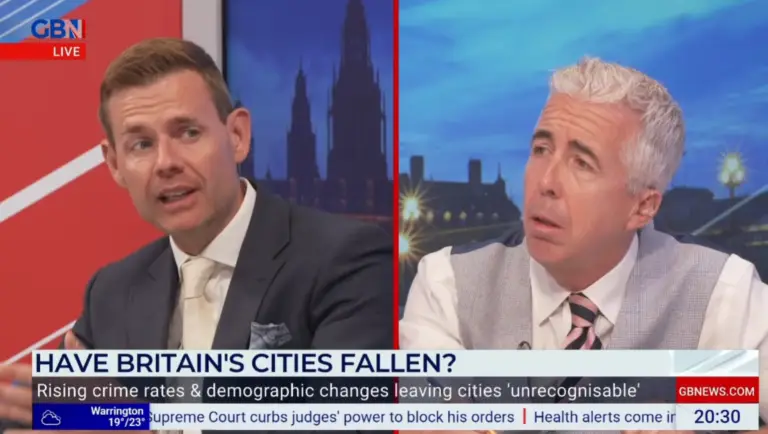On May 4th, Scotland will go to the polls to elect councillors for all its 32 Local Authorities. With the upcoming general election due to be held on the 8th of June, this is the first real opportunity in Scotland to gauge voting intentions since the Holyrood elections in 2016. Below is an outline of what the main issues affecting the council elections are, and what we can expect from the results.
How the votes are cast
Unlike in England and Wales, where the first-past-the- post (FPTP) voting system is in place, a system of proportional representation named Single Transferable Vote (STV) is used for all Scottish council elections.
STV is a voting system designed to create more proportional representation through ranked voting in multi-seat wards. In the Scottish council elections, the voter will number the candidates in order of preference. The voter can place a number by as many or as few candidates as they wish.
When counting the votes, a quota is calculated. This is a ‘magic number’ which allows candidates with first preference votes to be automatically elected. If no candidate reaches the quota, then the candidate with the fewest first votes is eliminated and their second preference votes are transferred to the other candidates. This is repeated until the quota is reached.
It is also important to note that the STV system makes forming a majority more difficult than a FPTP system. This means that most councils in Scotland are either formed by coalitions or in minority control. This has led to some slightly unconventional partnerships – Stirling Council, for example, is currently run by a Labour/Conservative coalition despite the SNP winning the most councillors.
What are the main election issues?
Normally, local council elections focus on local issues, like education, social care and bin collections. However, with the prospect of a second independence referendum, Britain exiting the European Union despite a Scottish remain vote, and the upcoming general election, most political pundits agree that the local election will now be fought along those converging lines.
In short, political parties will be using this election as the first credible indicator of Scottish voting intentions for both the general election and indyref 2.
This is shown most clearly in the party manifestos. Alongside the usual commitments to improve local schools, increase support for care workers and make councils more accountable, are declarations of support or opposition to both Brexit and independence.
The Scottish Conservatives, seeking to position themselves as the reliable pro-union party, have explicitly outlined their opposition to a new independence referendum in their manifesto – despite the decision not being taken at local level. They are clearly hoping to capitalise on Scottish ‘No’ voters who are worried about another independence referendum.
The Scottish Liberal Democrats, on the other hand, have sought to position themselves as the pro-EU party who will fight against Brexit. This is a clear attempt to sway ‘Remain’ voters in battle ground constituencies such as East Dunbartonshire.
Meanwhile, Scottish Labour have included the warning that despite council elections being about local government, “let’s not pretend that a vote for the SNP wouldn’t encourage them to believe that Scots want a second referendum on independence”. Again, seeking to position themselves as the pro-union choice for voters.
The SNP, however, have remained quiet on both independence and Brexit, choosing to stay local with their election commitments. This could be because they are aware of the divisive nature of independence and want to appeal to both ‘yes’ and ‘no’ voters alike, as well as the fact that over 1 million Scots voted for Brexit – many of them SNP supporters – and they do not wish to alienate their base.
What are the likely results?
The true extent of the results will depend largely on voter turnout, which is historically low for local elections.
In 2012, turnout was only 39%, down from 52.8% in 2007. Considering that Scotland has seen 5 major votes since 2012, and voter fatigue is considered a key contributor low turnout, many commentators are predicting a similar number of voters to cast their ballots on the 4th.
However, a new variable perhaps not accounted for, is the addition of 16 and 17 year olds being granted the vote in local authority elections in Scotland for the first time. Much of the focus over the past few months has been encouraging these new voters to turn out, and if this is successful, it could boost the overall percentage. Significantly, this would be good news for the SNP who tend to attract the highest support from the 16 – 24 demographic.
Despite the difficulties in predicting turnout, and the acknowledgement that STV makes forming a council majority unlikely, most political commentators agree upon the likely outcome.
The SNP are expected to increase their share of the vote, with the Scottish Conservatives also making moderate gains. Labour, however, is expected to lose a significant number of councils – including Glasgow City Council which has been Labour controlled since the 1980s.
Once the votes are counted, expect most of the focus to be on which party attracted the most ‘first choice’ votes in each constituency, as this is the biggest indicator for how Scotland will vote in the general elections on June 8th.
On May 4th, Scotland will go to the polls to elect councillors for all its 32 Local Authorities. With the upcoming general election due to be held on the 8th of June, this is the first real opportunity in Scotland to gauge voting intentions since the Holyrood elections in 2016. Below is an outline of what the main issues affecting the council elections are, and what we can expect from the results.
How the votes are cast
Unlike in England and Wales, where the first-past-the- post (FPTP) voting system is in place, a system of proportional representation named Single Transferable Vote (STV) is used for all Scottish council elections.
STV is a voting system designed to create more proportional representation through ranked voting in multi-seat wards. In the Scottish council elections, the voter will number the candidates in order of preference. The voter can place a number by as many or as few candidates as they wish.
When counting the votes, a quota is calculated. This is a ‘magic number’ which allows candidates with first preference votes to be automatically elected. If no candidate reaches the quota, then the candidate with the fewest first votes is eliminated and their second preference votes are transferred to the other candidates. This is repeated until the quota is reached.
It is also important to note that the STV system makes forming a majority more difficult than a FPTP system. This means that most councils in Scotland are either formed by coalitions or in minority control. This has led to some slightly unconventional partnerships – Stirling Council, for example, is currently run by a Labour/Conservative coalition despite the SNP winning the most councillors.
What are the main election issues?
Normally, local council elections focus on local issues, like education, social care and bin collections. However, with the prospect of a second independence referendum, Britain exiting the European Union despite a Scottish remain vote, and the upcoming general election, most political pundits agree that the local election will now be fought along those converging lines.
In short, political parties will be using this election as the first credible indicator of Scottish voting intentions for both the general election and indyref 2.
This is shown most clearly in the party manifestos. Alongside the usual commitments to improve local schools, increase support for care workers and make councils more accountable, are declarations of support or opposition to both Brexit and independence.
The Scottish Conservatives, seeking to position themselves as the reliable pro-union party, have explicitly outlined their opposition to a new independence referendum in their manifesto – despite the decision not being taken at local level. They are clearly hoping to capitalise on Scottish ‘No’ voters who are worried about another independence referendum.
The Scottish Liberal Democrats, on the other hand, have sought to position themselves as the pro-EU party who will fight against Brexit. This is a clear attempt to sway ‘Remain’ voters in battle ground constituencies such as East Dunbartonshire.
Meanwhile, Scottish Labour have included the warning that despite council elections being about local government, “let’s not pretend that a vote for the SNP wouldn’t encourage them to believe that Scots want a second referendum on independence”. Again, seeking to position themselves as the pro-union choice for voters.
The SNP, however, have remained quiet on both independence and Brexit, choosing to stay local with their election commitments. This could be because they are aware of the divisive nature of independence and want to appeal to both ‘yes’ and ‘no’ voters alike, as well as the fact that over 1 million Scots voted for Brexit – many of them SNP supporters – and they do not wish to alienate their base.
What are the likely results?
The true extent of the results will depend largely on voter turnout, which is historically low for local elections.
In 2012, turnout was only 39%, down from 52.8% in 2007. Considering that Scotland has seen 5 major votes since 2012, and voter fatigue is considered a key contributor low turnout, many commentators are predicting a similar number of voters to cast their ballots on the 4th.
However, a new variable perhaps not accounted for, is the addition of 16 and 17 year olds being granted the vote in local authority elections in Scotland for the first time. Much of the focus over the past few months has been encouraging these new voters to turn out, and if this is successful, it could boost the overall percentage. Significantly, this would be good news for the SNP who tend to attract the highest support from the 16 – 24 demographic.
Despite the difficulties in predicting turnout, and the acknowledgement that STV makes forming a council majority unlikely, most political commentators agree upon the likely outcome.
The SNP are expected to increase their share of the vote, with the Scottish Conservatives also making moderate gains. Labour, however, is expected to lose a significant number of councils – including Glasgow City Council which has been Labour controlled since the 1980s.
Once the votes are counted, expect most of the focus to be on which party attracted the most ‘first choice’ votes in each constituency, as this is the biggest indicator for how Scotland will vote in the general elections on June 8th.





